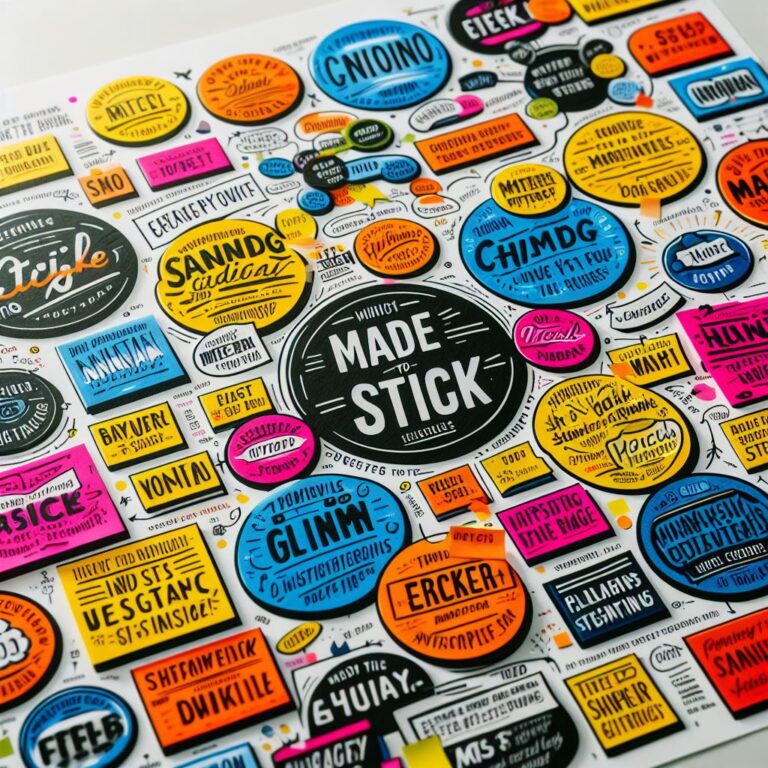Google Business Profile 3-Pack 30-Day Playbook
Day 9 – SEO Magic: Boost Your Website’s Charm with On-Site Tricks
SEO (Search Engine Optimization) is a crucial aspect of any successful website. It involves implementing various techniques to improve a website’s visibility and ranking on search engine results pages. On-site SEO refers to the optimization of a website’s content and structure to make it more search engine friendly.

In this article, we will explore the importance of on-site SEO and how it can help boost your website’s charm. We will also discuss some on-site tricks that you can use to improve your website’s ranking and attract more organic traffic. By implementing these techniques, you can ensure that your website is optimized for search engines and is more likely to appear at the top of search results pages.
Whether you are a business owner, blogger, or website developer, understanding on-site SEO is essential for the success of your online presence. With the right techniques and strategies, you can improve your website’s visibility, attract more visitors, and ultimately achieve your online goals. So, let’s dive in and discover the magic of on-site SEO!
Understanding SEO Magic

SEO or Search Engine Optimization is the process of optimizing a website to improve its visibility in search engine results pages. SEO Magic refers to the implementation of on-site tricks to boost a website’s charm and improve its search engine ranking.
To understand SEO Magic, it is important to know how search engines work. Search engines use complex algorithms to crawl and index websites based on several factors such as content relevance, user experience, and website authority. SEO Magic involves optimizing a website’s on-site elements to make it more appealing to search engines.
Some of the on-site tricks used in SEO Magic include:
- Keyword optimization: This involves optimizing website content with relevant keywords to improve its relevance to search queries.
- Title tags and meta descriptions: These are HTML tags that provide information about a webpage to search engines. Optimizing title tags and meta descriptions can improve a website’s click-through rate.
- Internal linking: This involves linking relevant pages within a website to improve its structure and make it easier for search engines to crawl.
- Image optimization: This involves optimizing images with alt tags and file names to improve their relevance to search queries.
Implementing these on-site tricks can help improve a website’s search engine ranking and attract more organic traffic. However, it is important to note that SEO is a long-term process that requires consistent effort and patience.
Importance of On-Site SEO

On-Site SEO refers to the optimization of the content and structure of a website to improve its ranking in search engines. It is a crucial aspect of any SEO strategy as it affects the website’s visibility, user experience, and engagement.
Implementing On-Site SEO tricks can help boost a website’s charm by making it more attractive to search engines and users. By optimizing the website’s content, structure, and design, On-Site SEO can improve the website’s relevance, authority, and usability.
Some of the benefits of On-Site SEO include:
- Improved visibility: On-Site SEO can make a website more visible to search engines by optimizing its content, structure, and metadata. This can help improve the website’s ranking in search results and increase its organic traffic.
- Better user experience: On-Site SEO can enhance the user experience by making the website more user-friendly, accessible, and engaging. This can help increase user satisfaction, retention, and conversion rates.
- Higher engagement: On-Site SEO can increase user engagement by providing relevant, informative, and valuable content that meets their needs and interests. This can help improve user engagement, loyalty, and advocacy.
Overall, On-Site SEO is an essential aspect of any SEO strategy as it can help improve a website’s visibility, user experience, and engagement. By implementing On-Site SEO tricks, website owners can boost their website’s charm and attract more traffic, leads, and sales.
Keywords and Their Magic
Keywords are the backbone of any SEO strategy. They are the words and phrases that people use to search for content online. By optimizing your website for the right keywords, you can improve your chances of ranking higher in search engine results pages (SERPs).
Long-Tail Keywords
Long-tail keywords are longer and more specific phrases that people use to search for content online. They are often easier to rank for because they have less competition. For example, instead of targeting the keyword “shoes,” you could target the long-tail keyword “men’s running shoes.”
Using long-tail keywords can help you attract more targeted traffic to your website. People who search for long-tail keywords are often further along in the buying process and more likely to convert into customers.
LSI Keywords
LSI (Latent Semantic Indexing) keywords are words and phrases that are semantically related to your main keyword. They help search engines understand the context of your content and improve your chances of ranking higher in SERPs.
For example, if your main keyword is “SEO,” some LSI keywords could be “search engine optimization,” “Google ranking factors,” and “on-page optimization.”
Including LSI keywords in your content can help you rank for a wider range of keywords and improve the relevance of your content. However, it’s important to use them naturally and not stuff your content with too many keywords.
In summary, using long-tail and LSI keywords can help you optimize your website for search engines and attract more targeted traffic to your website. By including these keywords in your content naturally, you can improve your chances of ranking higher in SERPs and reaching your target audience.
Meta Tags and Their Charm
Meta tags are an essential component of on-page search engine optimization. They provide information about a web page to search engines and can help improve its visibility in search results. Two of the most important meta tags are title tags and meta descriptions.
Title Tags
Title tags are HTML elements that specify the title of a web page. They appear in the browser’s title bar and are also used as the clickable headline in search engine results. A well-written title tag can help attract more clicks and improve the page’s search engine ranking.
Title tags should be concise, descriptive, and include relevant keywords. They should accurately reflect the content of the page and entice users to click through to the website. It’s important to note that title tags should be unique for each page on a website.
Meta Descriptions
Meta descriptions are HTML elements that provide a brief summary of a web page’s content. They appear below the title tag in search engine results and can influence whether or not a user clicks through to the website.
Like title tags, meta descriptions should be concise, descriptive, and include relevant keywords. They should accurately reflect the content of the page and provide users with a reason to click through to the website. It’s important to note that meta descriptions should be unique for each page on a website.
In summary, title tags and meta descriptions are important meta tags for on-page SEO. They provide valuable information to search engines and can help improve a website’s visibility in search results. By writing clear and concise title tags and meta descriptions that accurately reflect the content of a web page, website owners can improve their website’s charm and attract more visitors.
URL Structure and Its Impact
The URL structure of a website is an essential factor in determining its search engine rankings. A well-structured URL can help search engines understand the content of a page and improve the user experience. On the other hand, a poorly structured URL can negatively impact a website’s SEO.
Here are some tips to optimize your website’s URL structure:
- Keep it short and descriptive: Short and descriptive URLs are easier to remember and share. They also provide a clear idea of what the page is about.
- Use hyphens to separate words: Hyphens are the recommended way to separate words in URLs. Avoid using underscores or spaces as they can cause confusion.
- Include keywords: Including relevant keywords in the URL can help search engines understand the content of the page. However, avoid stuffing keywords in the URL as it can be seen as spammy.
- Avoid dynamic URLs: Dynamic URLs with long strings of parameters can be difficult for search engines to crawl and index. Use static URLs whenever possible.
- Use canonical tags: If you have multiple URLs with similar content, use canonical tags to indicate the preferred URL for search engines.
By following these tips, you can ensure that your website’s URL structure is optimized for search engines and provides a better user experience.
Image Optimization Tricks
Images can make a website more visually appealing and engaging, but they can also slow down the site’s loading time. Therefore, optimizing images is crucial to improving the website’s overall performance. Here are some on-site tricks that can help boost your website’s charm:
Alt Text
Alt text is a description of an image that appears when the image fails to load or when a visually impaired person uses a screen reader to browse the website. Alt text is not only useful for accessibility purposes but also for SEO. Search engines use alt text to understand what the image is about and to rank the website accordingly.
When writing alt text, it’s essential to be descriptive and accurate. Avoid using generic phrases like “image” or “photo” and instead use specific keywords that describe the image’s content. Also, keep the alt text concise and under 125 characters.
Image Compression
Large image files can significantly slow down a website’s loading time. Therefore, compressing images is crucial to improving the website’s speed. Image compression reduces the file size of an image without sacrificing its quality.
There are several tools available for image compression, such as Photoshop, GIMP, and TinyPNG. These tools can reduce the file size of an image by up to 70% while maintaining its quality. It’s essential to find the right balance between image quality and file size to ensure the website loads quickly without sacrificing the user experience.
In conclusion, optimizing images is essential to improving a website’s performance. By writing descriptive alt text and compressing images, website owners can improve their website’s speed, accessibility, and SEO.
Internal Linking Strategy
Internal linking is a crucial part of on-site SEO optimization. It helps search engines understand the structure of your website and the importance of each page. A good internal linking strategy can also improve user experience by guiding visitors to relevant content on your site.
Anchor Text
Anchor text is the clickable text in a hyperlink. It’s important to use descriptive anchor text that accurately reflects the content of the page being linked to. This helps search engines understand the context of the linked page and can improve its ranking for relevant search queries.
For example, instead of using generic anchor text like “click here” or “read more,” use descriptive anchor text like “learn more about our services” or “view our latest products.”
Link Placement
The placement of internal links on a page can also impact its SEO value. Links placed in the main content area of a page are generally given more weight than those in the footer or sidebar.
It’s also important to consider the relevance of the linked pages. Linking to related content can help establish a hierarchy of importance for your pages and improve the overall user experience.
In summary, a good internal linking strategy involves using descriptive anchor text and placing links in relevant areas of your site’s content. By doing so, you can improve the visibility of your pages in search results and provide a better user experience for your visitors.
Mobile Optimization Techniques
In today’s digital age, mobile optimization is imperative for any website. With mobile devices becoming the primary mode of internet access, it’s crucial to ensure that your website is optimized for mobile devices. Here are some mobile optimization techniques that can help boost your website’s charm:
1. Responsive Design
Responsive design is a technique that allows your website to adapt to different screen sizes and resolutions. By using this technique, your website will automatically adjust its layout to fit the screen of any device, whether it’s a desktop, tablet, or mobile phone. This ensures that your website looks great and functions well on any device.
2. Accelerated Mobile Pages (AMP)
AMP is a project by Google that aims to make web pages load faster on mobile devices. By using AMP, you can create mobile-optimized versions of your web pages that load quickly and efficiently. This not only improves the user experience but also helps boost your website’s search engine rankings.
3. Mobile-Friendly Navigation
Navigation is an essential part of any website, and it’s especially important for mobile devices. Mobile users have limited screen space, so it’s crucial to ensure that your website’s navigation is mobile-friendly. This means using clear and concise menu items, avoiding dropdown menus, and using buttons that are easy to tap with a finger.
4. Optimized Images
Images are an essential part of any website, but they can also slow down your website’s load time on mobile devices. To ensure that your website loads quickly on mobile devices, it’s important to optimize your images. This means using compressed images that are optimized for the web and reducing the number of images on your website.
By implementing these mobile optimization techniques, you can ensure that your website is optimized for mobile devices, providing users with a great experience and improving your website’s search engine rankings.
Page Load Speed and SEO
Page load speed is a crucial factor in SEO. A website that takes too long to load will frustrate users and cause them to leave, which can negatively impact search engine rankings. Therefore, it is essential to optimize the website’s page load speed for better SEO.
One of the ways to improve page load speed is by reducing the size of images and videos on the website. Large files take longer to load, which can slow down the website. Compressing images and videos can help to reduce their size without compromising on quality.
Another way to improve page load speed is by reducing the number of HTTP requests. The more requests a browser has to make to load a page, the longer it will take to load. Combining CSS and JavaScript files, reducing the number of images, and using CSS sprites can help to reduce the number of HTTP requests.
Using a Content Delivery Network (CDN) can also help to improve page load speed. A CDN stores copies of the website’s files in different locations worldwide, allowing users to access them from the closest server to their location. This can significantly reduce the time it takes to load the website.
In conclusion, optimizing page load speed is crucial for better SEO. By reducing the size of images and videos, reducing the number of HTTP requests, and using a CDN, website owners can improve their website’s page load speed, which can result in better search engine rankings and a better user experience.
Content Is King
When it comes to SEO, content is king. The quality and freshness of the content on a website can make a big difference in its search engine rankings.
Content Quality
High-quality content is essential for SEO success. Search engines want to provide their users with the best possible results, and that means delivering high-quality content that is relevant to the user’s search query.
To create high-quality content, it’s important to focus on the needs of the user. Content should be informative, engaging, and easy to read. It should also be well-organized and structured in a way that makes it easy for users to find what they’re looking for.
Content Freshness
Fresh content is also important for SEO. Search engines want to provide their users with the most up-to-date information available, and that means favoring websites that regularly update their content.
To keep content fresh, it’s important to regularly add new pages and blog posts to a website. This can be done by creating new content based on current events, industry news, or customer feedback. It’s also important to update existing content to ensure that it remains relevant and accurate.
In conclusion, creating high-quality, fresh content is essential for SEO success. By focusing on the needs of the user and regularly updating content, website owners can improve their search engine rankings and attract more traffic to their site.
AI Prompts
- ChatGPT, how can I effectively integrate relevant keywords into my website’s content without compromising its readability and user experience?
- ChatGPT, can you provide tips for optimizing my website’s meta tags, including title tags and meta descriptions, to improve its search engine visibility?
- ChatGPT, what strategies can I use to create an internal linking structure that enhances both user experience and SEO on my website?
- ChatGPT, how can I ensure my website’s URL structure is optimized for search engines and user-friendly?
- ChatGPT, can you suggest ways to optimize images on my website for faster loading times while maintaining their quality for SEO purposes?
- ChatGPT, what are the best practices for optimizing a website for mobile devices to improve its search engine ranking and user engagement?
ChatGPT, how can I measure and analyze the impact of my on-site SEO efforts on my website’s search engine ranking and overall performance?







